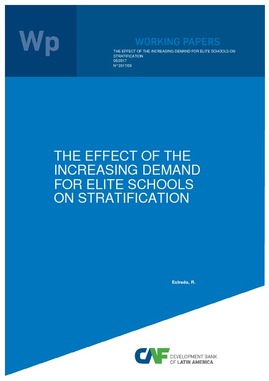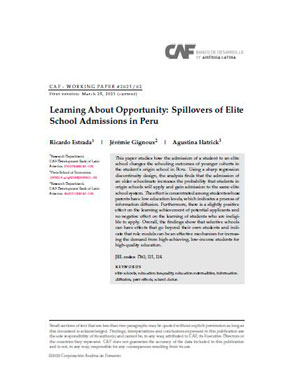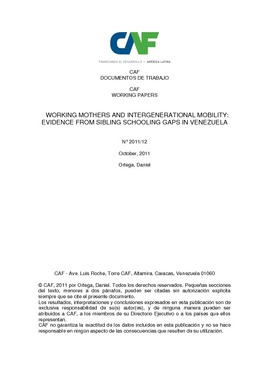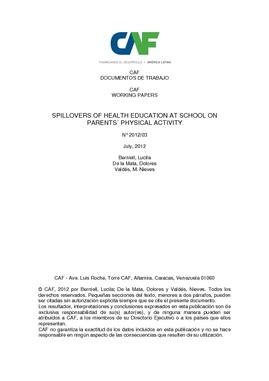Mostrar el registro sencillo del ítem
The Effect of the Increasing Demand for Elite Schools on Stratification
| dc.contributor.author | Estrada, Ricardo | |
| dc.coverage.spatial | México | es_ES |
| dc.date.accessioned | 2017-07-06T14:31:17Z | |
| dc.date.available | 2017-07-06T14:31:17Z | |
| dc.date.issued | 2017-05-31 | |
| dc.identifier.citation | Estrada, R. (2017, May 31). The Effect of the Increasing Demand for Elite Schools on Stratification. CAF – Working paper;N° 2017/09, Buenos Aires: CAF. Retrieved from https://scioteca.caf.com/handle/123456789/1065 | en_GB |
| dc.identifier.uri | https://scioteca.caf.com/handle/123456789/1065 | |
| dc.description.tableofcontents | I use detailed applications data to document a case in which, contrary to prevailing concerns, increasing school stratification by ability co-existed with stable stratification by family income: Mexico City public high schools. To understand this puzzle, I develop a model that shows that the effect of an overall increase in the demand for elite schools on school stratification by family income is a horse race between the correlations of family income and ability, and family income and demand. My empirical analysis reveals an initial (and decreasing) demand gap by family income that explains the observed stability in stratification. | es_ES |
| dc.language.iso | en_US | es_ES |
| dc.publisher | CAF | es_ES |
| dc.relation.ispartofseries | CAF – Working paper;N° 2017/09 | |
| dc.rights | CC-BY-NC | es_ES |
| dc.rights.uri | http://creativecommons.org/licenses/by-nc/4.0/ | es_ES |
| dc.subject | Educación | es_ES |
| dc.subject | Economía | es_ES |
| dc.subject | Investigación socioeconómica | es_ES |
| dc.title | The Effect of the Increasing Demand for Elite Schools on Stratification | es_ES |
| dc.type | workingPaper | es_ES |
| dc.publisher.city | Buenos Aires | es_ES |
Ficheros en el ítem
Este ítem aparece en la(s) siguiente(s) colección(ones)
-
6.1 Documentos de trabajo en investigación socioeconómica
En esta colección se encuentran los documentos de trabajo sobre temas económicos y sociales prioritarios para la región.






